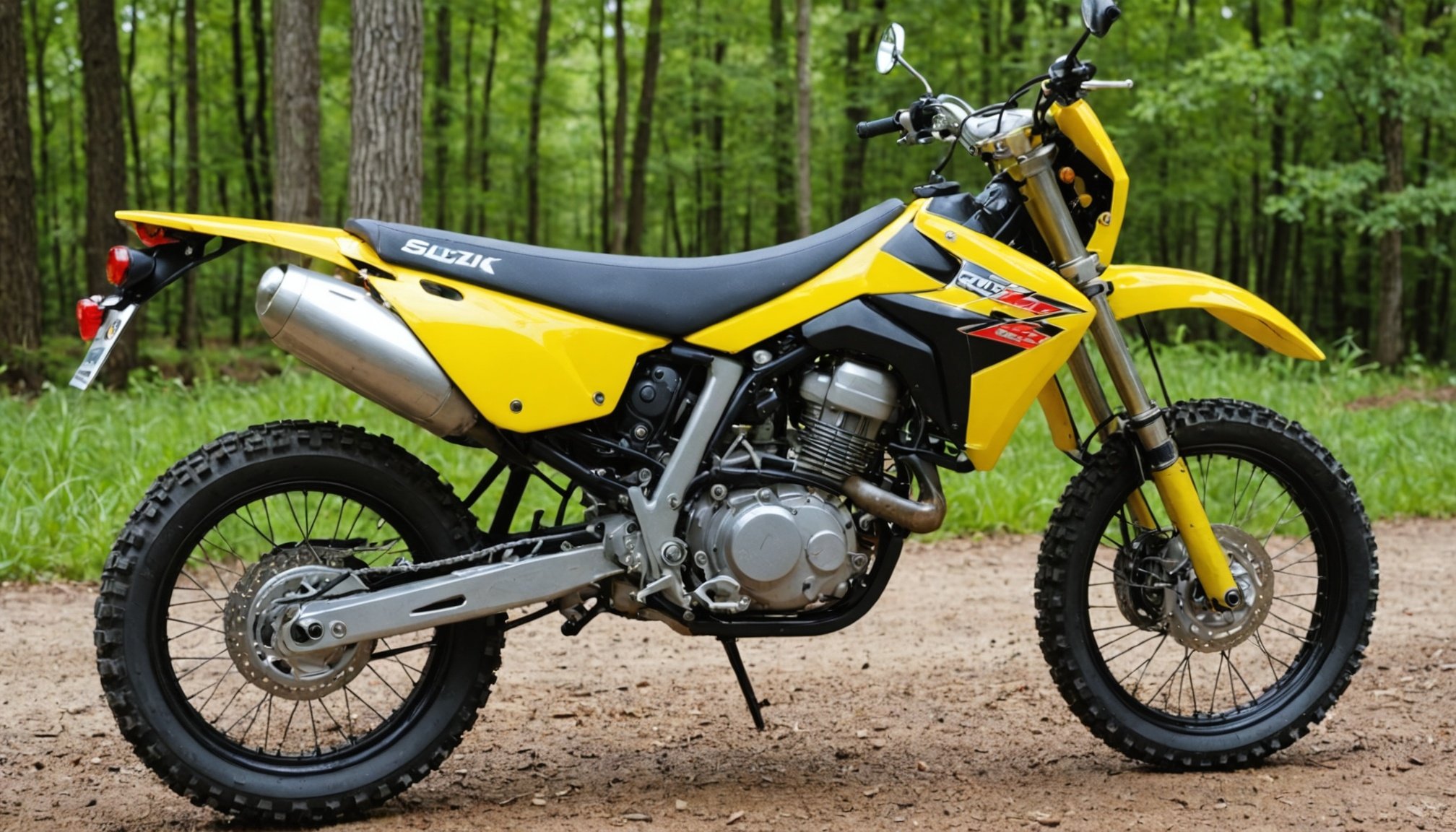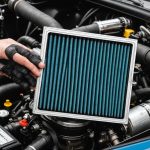Understanding Surface Rust on the Suzuki DRZ400 Frame
Surface rust is a common issue for many motorcycle riders, especially those who own the Suzuki DRZ400. Surface rust is the initial stage of corrosion, often appearing as reddish-brown, flaky deposits. It primarily affects the metal’s surface, leaving deeper structures intact initially. Over time, if not managed, it can lead to more severe damage.
The Suzuki DRZ400 frame is particularly prone to surface rust due to its exposure to moisture, dust, and road salt. These elements accelerate oxidation, which leads to rust formation. Motorcycles often face environments that encourage these conditions, particularly during wet seasons or in coastal regions.
Also read : Ultimate diy guide: installing a center stand on your honda nc750x for effortless maintenance
Steel parts of the DRZ400 are specifically vulnerable because they tend to hold onto moisture longer than other materials. Regular use in rainy conditions or along salty coastal roads compounds this problem. Areas of the frame that are not painted or sealed weaken first.
Common causes of rust on these frames include scratches, exposure to harsh weather, and neglect of routine maintenance. Understanding these vulnerabilities is essential for effective rust prevention and management.
To maintain your DRZ400, it’s crucial to frequently inspect for early signs of surface rust and implement preventive measures to protect your motorcycle’s frame.
Step-by-Step Cleaning Methods for Surface Rust
Addressing surface rust on your Suzuki DRZ400 requires doing it right to prevent deeper damage. The correct cleaning methods are essential.
Recommended Tools and Materials
To effectively remove rust, you’ll need some critical tools and materials, including:
- Wire brush or steel wool
- Rust remover solution or vinegar
- Sandpaper (medium and fine grit)
- Clean rags
Detailed Cleaning Process
Commence by using the wire brush or steel wool to gently scrub away loose rust particles. Be cautious to avoid scratching other parts of the motorcycle. Following this, apply a rust remover or vinegar using a clean rag. Let it sit for some time as per the product’s instructions or until the rust starts dissolving. Use sandpaper for stubborn spots, starting with medium grit, then shifting to fine grit for a smooth finish.
Importance of Thorough Inspection
During your cleaning process, inspect the areas carefully to identify any deeper corrosion that requires further attention. This vigilance ensures all rust is effectively addressed, preventing future spread. By integrating these methods into your routine maintenance, you protect your Suzuki DRZ400 from potential long-term damage.
Protective Coatings to Prevent Surface Rust
Applying protective coatings is an essential rust prevention strategy for your Suzuki DRZ400. Understanding the benefits and application techniques can help extend the lifespan of your motorcycle’s frame.
Overview of Effective Protective Coatings and Their Benefits
There are various coatings designed specifically to combat surface rust. Common options include acrylic, WD-40, and powder coatings. These form a barrier between the metal and environmental factors, significantly reducing the risk of oxidation. Coatings repel moisture and salt, which are common rust causes in the DRZ400.
Application Instructions for Different Types of Coatings
Before applying any coating, ensure the surface is clean and free from existing rust. For liquid coatings like acrylic or WD-40, spray evenly and allow it to dry completely. Powder coatings require a professional application but offer a durable solution. Always follow manufacturer guidelines for the best results.
Recommended Brands and Products for the Suzuki DRZ400
When selecting products, consider brands known for their effectiveness like Rust-Oleum or POR-15. These brands offer protective coatings that adhere well and withstand tough riding conditions. By integrating proper coatings into your regular maintenance routine, you ensure long-lasting protection against rust.
Regular Maintenance Tips for Keeping Rust at Bay
Routine maintenance is indispensable in rust management for the Suzuki DRZ400. It’s crucial to engage in systematic upkeep to mitigate rust causes and prolong your motorcycle’s lifespan. Begin with frequent inspections of the frame, especially after exposure to harsh conditions. This vigilance allows early detection and prevents escalation of surface rust into severe damage.
Seasonal Storage Tips
To avert rust accumulation during storage, particularly in winter, ensure your DRZ400 is thoroughly cleaned and dried before storing. This prevents moisture, a primary contributor to rust, from settling on the bike. Use a breathable cover to shield your motorcycle from dust and humidity, allowing any trapped moisture to evaporate.
Best Practices for Regular Cleaning and Upkeep
Integrate a cleaning routine that involves washing your bike after rides in wet or salted conditions. Use mild soap and water to wash off contaminants. Ensure thorough drying, paying extra attention to nooks and crannies where water might linger. Additionally, applying a light layer of WD-40 or similar protective coatings as part of maintenance can offer an extra defense against rust. Staying proactive with these practices will help keep your Suzuki DRZ400 looking sleek and running smoothly, free of debilitating surface rust.
Troubleshooting Severe Rust Cases
Dealing with severe rust on your Suzuki DRZ400 requires immediate attention to prevent irreversible damage. Recognizing signs of significant rust damage, such as extensive pitting or flakes that penetrate deep into the metal, is crucial. These rust indicators can compromise the structural integrity of the frame.
When tackling severe rust, a more aggressive approach is often necessary. Start by identifying the most affected areas. Use stronger cleaning methods, including rust converters, that transform rust into a stable compound. This is particularly effective for areas where standard rust removal tactics are insufficient.
Furthermore, for restoration, meticulous troubleshooting is key. Sandblasting, for example, can be a powerful method, removing even the most stubborn rust but requires expertise to avoid damaging intact metal. Chemical removers may also be necessary for deeply embedded rust spots.
Deciding whether to pursue a DIY repair or consult a professional hinges on the rust’s extent. While DIY can be cost-effective, sometimes professional attention ensures comprehensive restoration. Professionals have access to specialized tools and knowledge, ensuring safety and the preservation of your motorcycle’s value. Act promptly to mitigate further damage, safeguarding your DRZ400 for future rides.
User Testimonials and Case Studies
Understanding how others handle surface rust on their Suzuki DRZ400 can be enlightening. Real-life user experiences provide practical insights and validate effective strategies. Several DRZ400 owners have shared their journeys through forums and community groups, often highlighting how early intervention and consistent rust management routines dampened severe rust developments.
Real-life Experiences of DRZ400 Owners
Many users found success by integrating protective coatings immediately after purchasing their motorcycles. These coatings helped in battling initial signs of rust, establishing a preventive layer against rust causes. Riders have used their bikes in varied conditions, from wet climates to arid regions, documenting their maintenance strategies and newfound methods for rust removal.
Success Stories and Community Insights
One notable case study involved a DRZ400 owner living in a coastal area; they followed a rigorous regime of regular cleaning methods and protective coating applications. Endeavoring in this way notably reduced the appearance of rust over time. Gathering such case studies from the community can aid in forming aggregate practices tailored for different riding conditions.
These shared experiences emphasize the importance of community in resolving rust issues. Harnessing collective wisdom transforms daunting maintenance routines into manageable tasks, inspiring confidence among DRZ400 enthusiasts.











